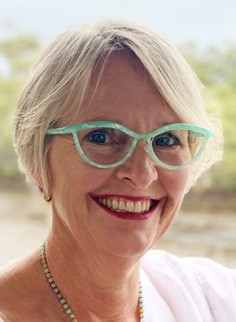THE OPHTHALMIC JOURNAL

I’m really excited to have worked with Dr Kate Gifford to present this issue of mivision, which focusses on myopia.
Why? Because we have an extraordinary collection of articles for you, ranging from omics techniques being used to better understand the physiological processes underlying this complex disease, through to personalised pipeline treatments that include artificial intelligence, smart contact lenses, and new pharmacological agents in the form of eye drops and oral tablets.
Within these wide parameters we have articles to help you compare the multitude of published studies on myopia management treatments and strategies, to assist in managing complex cases in kids, provide an insight into pathologies associated with myopia that can progress through adulthood, and of course, articles on the latest lens technologies.
Thanks to all the optometrists, ophthalmologists, and academics who have contributed articles for the issue. With Myopia Action Month coming up in September, I hope this collective August content will fire up the profession and have everyone ready to maximise myopia awareness within their local community.
Along with preparing the myopia issue, the last few weeks have been jam packed with milestone celebrations, product launches, conferences, and CPD meetings. Despite the broader gloomy economy, this industry is definitely alive and kicking. I have really enjoyed seeing so many optometrists and ophthalmologists turn up at events, full of energy and eager to learn, network and party. You’ll find news of some of these events in the coming pages with more to come in September – we simply couldn’t fit everything in!
And Dr Margaret Lam has moved from George and Matilda Eyecare to 1001 Optical, where she plans to increase the clinical focus with “enhanced patient care” and by “taking advantage of advances in research and technology”.
However, just as access to primary eye care continues to expand, our hospitals face increasing pressure on resources and budgets, limiting their ability to keep up with demand for services.
With the Australian health system described as “crumbling beyond repair”, it is expected that by mid-year we’ll have around 500,000 people “stuck waiting for elective surgery, many of them unable to even get in to see a specialist to get on to an official waiting list”. And of course, in the case of those waiting for surgeries such as cataract, their condition will potentially worsen, leading to diminished outcomes that will increase the burden on the individual and country as a whole. It’s a sad and vicious cycle, and one that must be addressed by re-directing resources in a sustainable way.
In this issue of mivision we offer a broad range of articles with a strong focus on the non-clinical side of eye care. From the delivery of low vision services, to strategies for bringing customers back into practice, and the development and management of graduate optometrists; it’s all here. We’ve also provided some excellent CPD opportunities with articles on presbyopia correction, contact lens optics, dry eye disease, and cover tests.
Enjoy.
MELANIE KELL EDITOR
In the spirit of reconciliation, mivision acknowledges the Traditional Custodians of country throughout Australia and their connections to land, sea, and community. We pay our respect to their Elders past and present and extend that respect to all Aboriginal and Torres Strait Islander peoples today. As a bi-national publication, we acknowledge Māori as tangata whenua and Treaty of Waitangi partners in Aotearoa New Zealand.